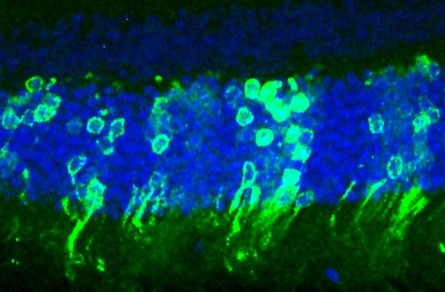Scientists Restore Sight In Night-Blind Mice

Night-blindness can be reversed in mice by transplanting immature light-detecting cells into their eyes, according to new research.
The findings could inspire new treatments for degenerative eye conditions in humans such as macular degeneration, researchers said.
Ophthalmologists transplanted 200,000 rod cells into rod-free mice and tested how the supplemented eyes responded to low-light stimuli. Murine eyes typically contain between 3 million and 4 million rods that sense light but not color and line the back of an eye, according to the study. Night blindness is caused by either a lack of or malfunctioning rods.
After four to six weeks, researchers noticed that the transplanted rods began to form connections with the brain and sent signals when stimulated.
This is fantastic progress and exciting for patients faced with sight loss, David Head, chief executive of the charity Fighting Blindness, who was not involved in the study, told the Daily Mail. To read that cells appeared to be functioning almost as well as normal rod-photoreceptor cells and had formed the connections needed to transmit visual information to the brain is truly amazing. This is a great step forward.
Researchers tested the mice in a Y-shaped pool that included a visual exit at the end. In bright light, night-blind mice swam to the exit, but in the dark, the night blindness made the mice swim in circles. Four of the nine mice that received the rod transplant found the exit in the dark almost as quickly as normal mice. The five that didn't find the exit had a low numbers of rods, which indicated the transplant didn't take, researchers said.
The researchers said much more work needs to be done before they test the transplant on humans, and said clinical trials could be as far as 10 years away.
This is a really important proof of concept, but it's not at a stage we can immediately move to a clinical trial, ophthalmologist Robin Ali of the University College London, told LiveScience. There are other steps that we need to take.
The next step could include determining whether researchers can restore sight by transplanting cone cells that line the back of the eye and detect color. The researchers said if cone transplants were successful, the technique could prove to be a useful treatment for macular degeneration, the most common cause of blindness in the United States.
Transplantation of cones would actually really increase the potential usefulness of this treatment because humans rely more on cones than on rods, Ali told Dawn.com
Macular degeneration is caused by a loss of both rods and cones and results in an inability to read or detect faces. No treatment for the condition exists, though researchers showed vitamin supplements slow the disease progression.
The researchers said they will continue to work on figuring out how to improve the effectiveness of the transplant and will focus on studying any long term effects.
Now that we can see that we can really improve vision it gives us the impetus to really push forward, Ali told ScienceNews.
The journal Nature published the study on Wednesday.
© Copyright IBTimes 2024. All rights reserved.





















